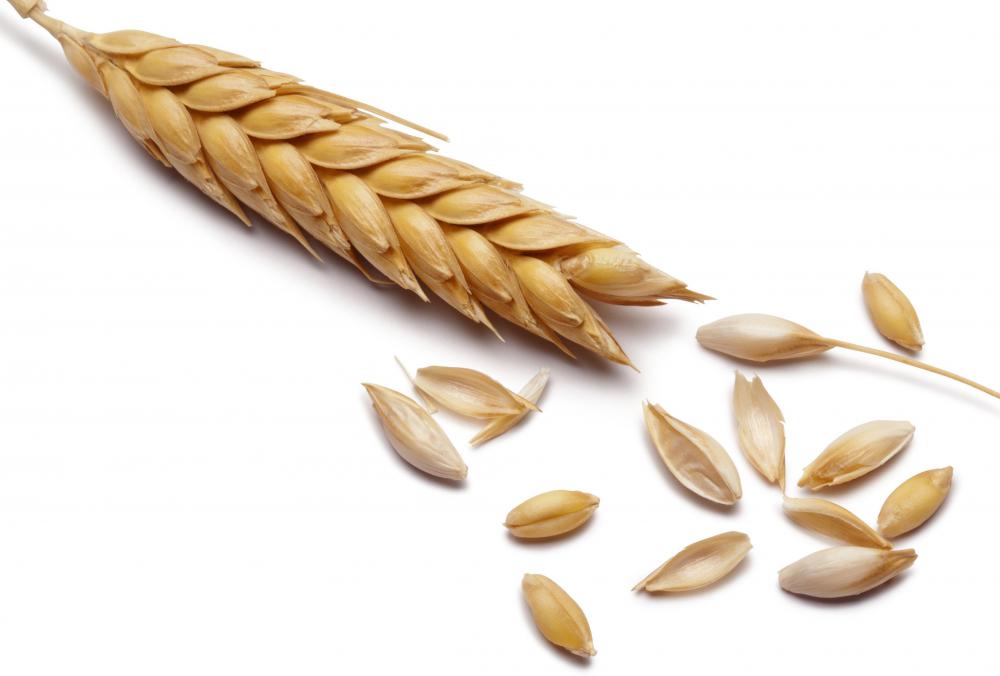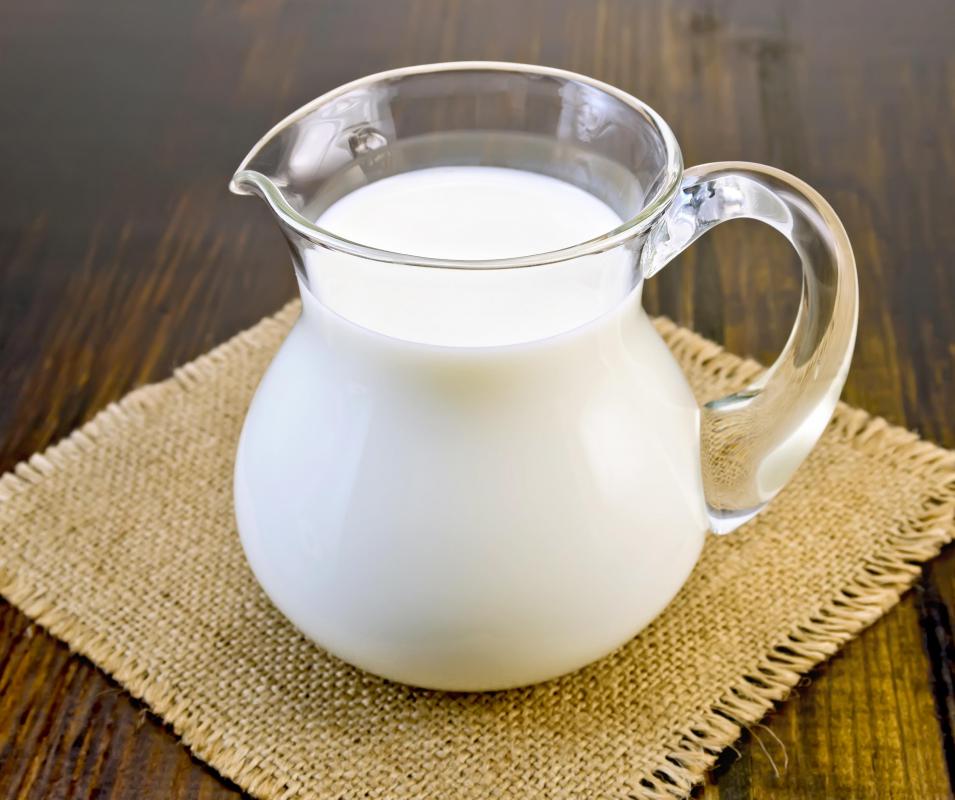At DelightedCooking, we're committed to delivering accurate, trustworthy information. Our expert-authored content is rigorously fact-checked and sourced from credible authorities. Discover how we uphold the highest standards in providing you with reliable knowledge.
What is Malt Powder?
Malt powder or malt flour should not be confused with malted milk powder, often available in drink mixes like Horlicks®, Carnation Malted Milk®, and in some forms of Ovaltine®. True malt powder is usually made of barley. The process for producing the powder is to allow the barley to sprout for a short period of time, then to dry and finely grind the sprouted barley.
Malt powder or malt flour is present in numerous baked goods where it imparts a natural sweetness. It tends to make baked goods browner and shinier. Malt powder may be used alone to make malted milk shakes, a combination of ice cream, sometimes flavored syrups, milk and malt powder. Alone and uncooked, this flour can have a bitter aftertaste, which is usually not noticeable when it is mixed with other ingredients.

There are two types of malt powder available. Diastatic malt powder is allowed to develop enzymes, which digest starches into sugar. When diastatic malt is used in baked goods, it tends to result in sweeter, smoother, and higher rises. The extra sugar it produces helps feed yeasts used to make yeast dough, so less yeast can be used.
Much more common is non-diastatic malt. This does not have enzymes but it can still impart wonderful flavor, and lovely appearance to baked goods. Non-diastatic malt is common in malted milk powder. Both forms may be available at your local health food store, but non-diastatic malt is usually easier to find. Some non-diastatic malts are blended with maltodextrin, to be used as a sugar substitute.

In total, there isn’t much nutritional value to malt powder. About one and half teaspoons (4 grams) have approximately 15 calories. This is comparable to sugar, which has about 16 calories per teaspoon. It is fat free, but isn’t rich in vitamins. Mostly, it functions to provide extra flavoring in foods, and with diastatic malt, to help conserve yeast and rise bread. Malt affects appearance and may be desired for its ability to give nice brown crusts to bread or to cause bagels and biscuits to shine.

To use diastatic malt in bread, the key is to be sparing. You should plan to replace about one teaspoon of sugar in the bread with half a teaspoon of malt. The malt should be mixed in with yeast while it proofs. Malt is also used as a way to convert carbohydrates to sugar in beer. A lot of malt will give the beer a more alcohol taste. This is why it’s valuable to use a small amount in bread; too much can make yeast in bread overproofed, and the dough will be hard to work with. The final product can have a faint alcohol or sour smell, which is considered highly undesirable.
AS FEATURED ON:
AS FEATURED ON:















Discussion Comments
I have organic unhulled barley seed and today is the second day. I'm trying to make non-diastatic malt flour powder for milk shakes, etc.
How many days should this be sprouting and will the hulls easily come off soaking in water prior to dehydrating? What temp should I dry them?
@santarosa: I've seen malt powder replaced with brown sugar in some recipes.
@santarosa: try this chocolate recipe that can be used as pudding or frosting for a cake: Two (2) ripe avocados mashed and whipped smooth add half-cup free-trade cocoa powder and half a cup agave nectar. Whip it up and enjoy. The Fat Free Vegan Blog has a load of quality recipes in the database.
@santarosa: I have been told that Ovaltine can be used as a substitution for malt powder. Ovaltine contains flour, barley malt extract, whey, and lots of vitamins. My friends' mom said that it was great for baking with.
For a nutritional freak like myself, but who has faults as well; is there anything else out there as a substitute I can use when baking? I know it probably won't taste the same, but as long as I can satisfy my sweet tooth without feeling the guilt will help plenty, both health and satisfaction. Thanks.
Post your comments